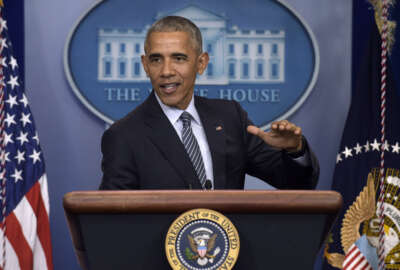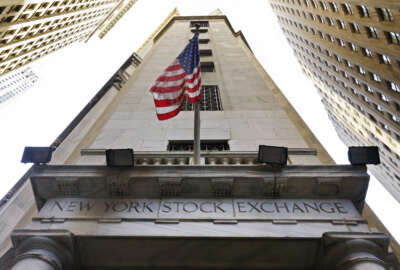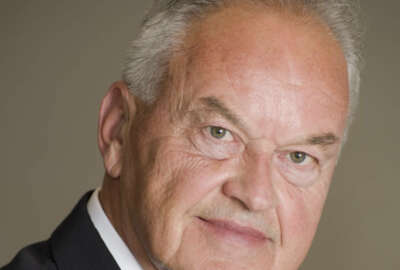
New pay raise: What’s in your wallet?
Federal workers in the Washington-Baltimore area will be getting their biggest pay raise in years next month. Senior Correspondent Mike Causey has a city-by-city...
White collar federal workers in the Washington-Baltimore metro area will get the largest pay raise — 2.88 percent — when new pay scales take effect in January. That raise includes the 1 percent that will go to all employees nationwide, plus a locality adjustment based in part on private sector salaries here.
According to the 1990 federal pay law, which has never been fully implemented, civil servants in the metro Washington area, which includes big chunks of Virginia, Maryland a a portion of West Virginia, government workers here are paid 27.10 percent less than their private sector counterparts doing similar jobs. That “gap” is widely disputed because it does not include data for government fringe benefits (retirement benefits, holidays, vacation time) that are generally superior to those in the private sector.
Feds in Los Angeles,-Long Beach, California, will get a 2.58 percent raise. Those in San Jose-San Francisco-Oakland, will get 2.80 percent. The raise in metro New York City, which includes Newark, other parts of New Jersey and Connecticut and parts of Pennsylvania, will be 2.58 percent. People in San Diego-Carlsbad, California, will get 2.82 percent. Raises will vary from locality-to-locality. Workers in Richmond, Virginia, will get a 2.24 percent hike.
Employees who are in the catchall RUS (for Rest-of-U.S.) locality pay zone, places like Louisville, Kentucky; Little Rock, Arkansas; Nashville, Tennessee; Charleston, South Carolina, for example, will get a flat 1.63 percent raise that will show up in their checks in mid-January. For most feds this is the largest pay raise in years.
On the downside, for many the pay raise will be a negative in take-home pay because of higher health insurance premiums and the big jump in long-term-care insurance premiums. To see where you stand, and how feds in other locality pay areas are faring, check the chart below. It shows what the pay raise (the hometown private vs. federal pay gap) should be and ranges from 15 percent to 38 percent. The second column is the reality. The amount workers will be getting in January:
| Alternate Plan Results for 2017 (1.0 Percent Base GS Plus Locality Adjustments) |
||
| Locality Pay Area | Locality Payment | Total 2017 Pay Adjustment |
| Alaska | 27.13% | 2.59% |
| Albany-Schenectady, NY | 15.85% | 2.20% |
| Albuquerque-Santa Fe-Las Vegas, NM | 15.36% | 1.87% |
| Atlanta—Athens-Clarke County—Sandy Springs, GA-AL | 20.70% | 1.95% |
| Austin-Round Rock, TX | 15.97% | 2.29% |
| Boston-Worcester-Providence, MA-RI-NH-CT-ME | 26.73% | 2.24% |
| Buffalo-Cheektowaga, NY | 18.66% | 2.16% |
| Charlotte-Concord, NC-SC | 15.65% | 2.07% |
| Chicago-Naperville, IL-IN-WI | 26.85% | 2.14% |
| Cincinnati-Wilmington-Maysville, OH-KY-IN | 19.52% | 1.65% |
| Cleveland-Akron-Canton, OH | 19.71% | 1.71% |
| Colorado Springs, CO | 15.99% | 2.30% |
| Columbus-Marion-Zanesville, OH | 18.49% | 1.93% |
| Dallas-Fort Worth, TX-OK | 22.61% | 2.31% |
| Davenport-Moline, IA-IL | 15.56% | 2.00% |
| Dayton-Springfield-Sidney, OH | 17.59% | 1.94% |
| Denver-Aurora, CO | 24.65% | 2.41% |
| Detroit-Warren-Ann Arbor, MI | 25.68% | 2.04% |
| Harrisburg-Lebanon, PA | 15.63% | 2.02% |
| Hartford-West Hartford, CT-MA | 27.57% | 2.10% |
| Hawaii | 17.92% | 1.96% |
| Houston-The Woodlands, TX | 30.97% | 2.46% |
| Huntsville-Decatur-Albertville, AL | 17.82% | 2.26% |
| Indianapolis-Carmel-Muncie, IN | 15.85% | 1.82% |
| Kansas City-Overland Park-Kansas City, MO-KS | 15.59% | 1.97% |
| Laredo, TX | 16.68% | 2.84% |
| Las Vegas-Henderson, NV-AZ | 15.93% | 2.22% |
| Los Angeles-Long Beach, CA | 29.65% | 2.58% |
| Miami-Fort Lauderdale-Port St. Lucie, FL | 22.13% | 1.90% |
| Milwaukee-Racine-Waukesha, WI | 19.61% | 2.04% |
| Minneapolis-St. Paul, MN-WI | 22.72% | 2.18% |
| New York-Newark, NY-NJ-CT-PA | 31.22% | 2.58% |
| Palm Bay-Melbourne-Titusville, FL | 15.48% | 1.94% |
| Philadelphia-Reading-Camden, PA-NJ-DE-MD | 23.87% | 2.36% |
| Phoenix-Mesa-Scottsdale, AZ | 18.57% | 2.25% |
| Pittsburgh-New Castle-Weirton, PA-OH-WV | 17.86% | 2.02% |
| Portland-Vancouver-Salem, OR-WA | 21.95% | 2.05% |
| Raleigh-Durham-Chapel Hill, NC | 19.02% | 1.92% |
| Richmond, VA | 18.19% | 2.24% |
| Sacramento-Roseville, CA-NV | 24.14% | 2.26% |
| San Diego-Carlsbad, CA | 26.98% | 2.82% |
| San Jose-San Francisco-Oakland, CA | 38.17% | 2.80% |
| Seattle-Tacoma, WA | 24.24% | 2.64% |
| St. Louis-St. Charles-Farmington, MO-IL | 15.83% | 2.18% |
| Tucson-Nogales, AZ | 15.66% | 2.01% |
| Washington-Baltimore-Arlington, DC-MD-VA-WV-PA | 27.10% | 2.88% |
| Rest of U.S. | 15.06% | 1.63% |
Nearly Useless Factoid
Jerome Lester Horwitz went on to comedy fame as Curly in The Three Stooges. The youngest of the Howard brothers, he was nicknamed “Babe.”
Source: Wikipedia
Copyright © 2025 Federal News Network. All rights reserved. This website is not intended for users located within the European Economic Area.
Mike Causey is senior correspondent for Federal News Network and writes his daily Federal Report column on federal employees’ pay, benefits and retirement.
Follow @mcauseyWFED





